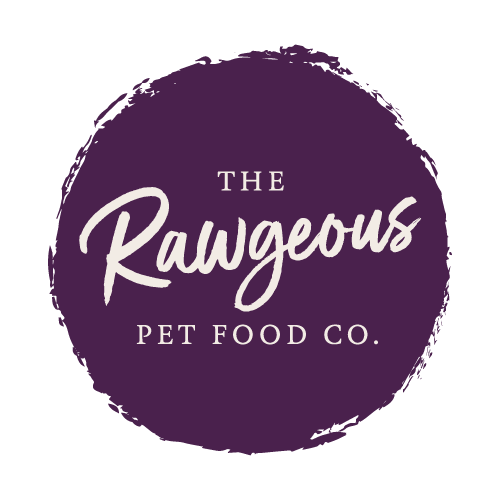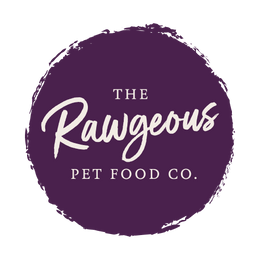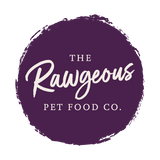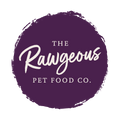Food to Help Dog Express Glands

As pet parents, we want to do everything we can to keep our pups fit and healthy, even if it means dealing with gross stuff on occasion. In this article, we discuss the 101 of how to help your dog in the instance he or she needs to express their glands, and importantly, what food to feed to help prevent and cure a dog's anal gland discomfort and support good digestion.
What Are a Dog's Anal Glands
Dogs have anal glands otherwise called anal sacs. These are small pouches located on a dog's rear, to either side of the opening of a dog's anus. These glands produce a foul-smelling substance that is used to mark a dog's territory and communicate with other dogs.
Sometimes a dog's anal glands become impacted or infected, leading to severe discomfort and problems for your dog. The classic 'scooting' is the first indication that your dog may have anal gland problems.
Wild versus Domestic Dogs
In the wild a dog's diet and lifestyle would usually cause its anal glands to empty naturally.
Domestic dogs seem to have more anal gland problems than wild dogs. Overweight, unhealthy dogs, that don't exercise or are fed the wrong diet, and one too many treat, without enough fibre or water in their foods, can have recurring anal gland issues. These dogs will often also have loose stools, poor digestive health, be carrying too much weight and have multiple body issues.
Dog Food to help with an Dog's Anal Gland Problems
If you are concerned about your dog's anal glands, and if they seem to be having recurring anal gland issues, then a diet of healthy raw dog food may help.
A raw diet contains all the nutrients, minerals, fatty acids, fibre and essential vitamins that your pup needs to support healthy anal gland function, good digestion and regular bowel movements.
A raw dog food diet can support a dog's immune system, preventing other health issues and maintain a dog's body and general wellbeing.
Good Gut and Bowel Health:
Signs of a healthy gut, efficient digestion and good bowel health would include firm stools that don't smell, a soft shiny coat, bright eyes and clean teeth.
Overall a healthy, natural high fiber, raw diet that contains top quality protein such as chicken or turkey, vegetables, healthy fats and the right balance of essential vitamins and minerals will keep your dog in top condition as well as ensuring you have a happy and energetic dog.
A good diet also makes it easier for dogs anal glands to empty naturally. So if you want to give your dog a better quality of life, without anal gland issues such as blocked anal sacs, and help them feel more comfortable and confident, consider switching to natural, raw dog foods today.

Anal Glands Explained:
The Anatomy of Anal Glands
The anatomy of these glands can vary depending on the individual dog, but they typically consist of a series of ducts that connect the glands to the surface of the skin.
Inside these glands, there are specialized cells called acinar cells that produce and store the fluid which produces such a pungent smell.
If your dog's anal glands become impacted or infected, it can lead to discomfort and problems with their normal function.
It is important to keep your dog's anal glands healthy and prevent issues from developing,
Why Do Dogs Have Anal Glands?
While the exact purpose of these anal glands remains somewhat unclear, scientists believe that the anal sacs may play a role in sexual signalling and territory marking.
Imagine the scent glands you find on a skunk... they fulfil a similar function.
In addition to marking territory, anal glands may also be used as a form of communication between dogs.
Dog Communication:
According to some studies, when dogs encounter another dog or animal that they do not know, a dog may approach another dog with tail held low.
This is believed to be an invitation for the other dog to sniff the dog's rear, or anal region, which is known as the "anogenital region." By doing so, each dog can then get a sense of the other's identity, gender, and social status.
Given the important role that anal glands play in dogs' communication and behaviour, it is clearly essential to keep each anal gland healthy and functioning properly.

Dogs Anal Gland Expression in the Wild
In the wild, dogs use a number of different techniques to express their anal glands and communicate with other members of their species.
For example, many wild dogs will urinate on trees and rocks as a way of marking their territory, but others may rub their scent glands along vegetation or other objects in order to leave the scent rom the anal glands in a visible location.
Another common technique used by wild dogs is to "flick" their anal glands, which involves squeezing these glands to release small amounts of the glandular substance onto nearby objects or surfaces.
This can help them express any build-up of material within the glands and leave a pungent mark from the anal sac for other animals to smell.
While some domestic dogs may not exhibit these behaviors as frequently, it is important to be aware of them in order to maintain the health and well-being of your pet.
Why Don't Some Dogs Anal Glands Naturally Empty?
There are a number of reasons why some dogs may experience problems with their anal glands, or why they may not be able to empty their anal glands naturally.
For example, some dogs may be born with underdeveloped or absent anal sacs, which can make it difficult for them to express these glands naturally or on their own.
Digestive Health
Additionally, dogs that suffer from digestive issues or have very loose or overly soft stools may also experience problems, such as impacted anal glands as a dog needs a firm stool to apply appropriate pressure on the anal gland to empty and massage it.
High Fibre Diet
In these cases it can help to feed your pet a high fiber dog food diet, with more fresh vegetables, vitamins, essential oils and minerals.
This is natural dog food that your pooch would eat in the wild, and foods which will help your dog stay healthy and fit, with regular bowel movements, firm stools, a strong body, ideal weight and good digestion will also help prevent anal gland problems.
Obesity and Anal Gland Health
A very common cause of anal gland problems is obesity, as an increase in body weight can put a strain on the muscles on either side of these glands.
Poor Hygiene
Other possible contributors include poor hygiene, excessive licking or scratching of the anal area, and a diet high in processed foods such as dry food.
To help prevent or manage anal gland problems, it is important to take steps to keep your dog's anal glands healthy and functioning properly.
This can include feeding your pet a high-quality, high fiber dog food diet that supports overall health and helps to maintain good stool consistency and lower body weight for your dog.
Dog's Anal Gland Problems
Impacted Anal glands:
An impacted anal gland, also known as an anal sac impaction, refers to a condition in which the glands located on either side of a dog's anus become blocked or clogged with hardened material.
Causes:
This may occur due to inflammation, bacterial infections, or other underlying health issues that can prevent these glands from functioning properly.
Symptoms:
Symptoms of impacted anal glands can include pain, inflammation, and discomfort around the anus, as well as foul-smelling diarrhea or leaking of liquid from the anal region.
When to Seek Help from your Vet:
If your dog is showing signs of a severely infected anal gland, it is essential to seek help from your vet in order to address the underlying cause and help clear out any build-up in these glands.
Recommended Dog's Diet:
A vet may recommend a special high fiber diet for your pooch, the introduction of essential vitamins and minerals, natural or raw dog foods and vegetables.
A healthy natural dog's diet will help support digestive health and see a return to normal bowel movements.
Washing:
Simple home treatments may include washing your dog's bottom with warm water to clean it and soothe the area.
With proper care and management, most dogs will be able to recover quickly but anal glands need ongoing care and attention.

How to Tell if your Dog has Anal Gland Problems
If you are not sure how to tell whether your dog's anal glands may be impacted, there are a few common signs and symptoms to look out for.
We have noted that dogs may be uncomfortable or show signs of pain around the anus and tail area.
They may also have very severe or foul smelling diarrhoea and stool liquid may leak from the anal region where there is pressure on the anal glands.
Scooting:
You may also notice your dog scooting across the floor or dragging their bottom on the ground during a walk in an attempt to relieve these symptoms.
This is a natural reaction to the discomfort your dog is feeling.
Diagnosis of your dog:
To determine if your dog's anal glands are impacted, it is important to consult with a vet so that they can perform an examination of your dog and run any necessary diagnostic tests.
This may involve taking a sample of fluid from the impacted glands and analyzing it for signs of infection, or taking samples of your dogs stools to check their general health.
A vet may also use x-rays or other imaging techniques to look for any blockages in the anal sac or build-up in the anal glands.
Medical Treatment:
Once your veterinarian has determined if your dog's anal glands are impacted, they can provide recommendations for treatment and management of this condition.
This may involve the use of antibiotics or other medications to reduce inflammation and bacterial growth, as well as dietary changes or other interventions to help improve digestion, and prevent the buildup of impacted material in your dog's anal glands.
How to Express Your Dog's Anal Glands at Home
If you are looking for ways to express your dog's anal glands at home, there are several different techniques that you can try.
Some common, natural approaches include using a warm compress or gentle massage to relax the area around the glands, along with carefully applying pressure on these glands from the outside in order to gently release any blockage or buildup.
A vet can guide you in how to massage or squeeze the area around the anus, applying firm but gentle pressure on the outside of these glands.
If your dog's anal glands are impacted and unable to release fluid with your help, you may need to consult a vet as this can be a delicate procedure and it is natural that your pet may get upset and be in considerable discomfort.
This can be a difficult and even painful process for dogs if done incorrectly.
What Happens if you Don't Express Anal Glands?
If you do not express your dog's anal glands, it can lead to a number of uncomfortable and potentially serious complications.
These may include inflammation, infection, or other issues that can impact the function of these glands and prevent them from releasing fluid naturally.
In some cases, anal glands that have become infected may even need to be surgically removed in order to prevent further problems or complications.
So it is important to seek veterinary care right away if you notice any signs of anal gland problems or infection in your dog.
Always follow your vet's recommendations for managing this condition.

Should I Let My Groomer Express Anal Glands?
If you don't want to express anal glands at home, and let's face it, it wouldn't be top of my Christmas list, then you might consider turning to another professional.
It is generally recommended that you consult with a veterinarian before allowing your groomer to express your dog's anal glands, in order to determine if this process will be safe and effective for your dog. As a rule of thumb, most groomers will not have the relevant experience to do this.
Additionally, it is important to be aware of any potential risks or complications associated with this process, and ensure that the groomer or other individual who performs this procedure has the proper training and experience to do so in a safe and effective manner.
Ultimately, you should discuss this decision with your vet and make an informed choice based on your dog's specific needs and condition
How Often do I need to Express my Dog's Anal Glands?
The frequency with which you will need to express your dog's anal glands will depend on a variety of factors, including your dog's age, health status, and other individual factors. So we can't just say 'twice a day' and give you a set schedule.
However, in general, it is recommended that you consult with your veterinarian or other trusted healthcare professional to determine the best schedule for managing your dog's anal glands.
This may involve regular at-home expression, or simply monitoring any changes in your dog's behavior or other symptoms that may indicate an issue with their anal glands.
With proper care and attention, you can help keep your dog healthy and comfortable, while minimizing any risks or complications associated with this important process.
Does it Hurt a Dog to Express their anal glands?
It is important to be aware that expressing the anal glands of your dog can be uncomfortable for them, and you should always take steps to minimize any discomfort or risk of injury to the dog.
This may involve using gentle and careful pressure to avoid overstimulating the glands, and working in a well-ventilated area with comfortable temperatures.
Take other appropriate measures to keep your dog as relaxed and comfortable as possible during this process.
With proper care and attention, you can help minimize any potential pain or discomfort while effectively expressing your dog's anal glands.
If you are unsure, it is always better to consult a vet!
What types of Dog Breed have Anal Gland Problems?
Any dog breed can experience issues with their anal glands.
This may include a miniature pooch or large hunting dog, a young or old dog, and any other combination of factors.
Therefore, it is essential to be aware of the signs and symptoms of anal gland problems in your dog, and consult with your veterinarian as needed for appropriate diagnosis and treatment.
With proper care and attention, you can help keep your dog healthy and comfortable, even if they are prone to anal gland issues.
Top Tips to Help a Dog with Impacted Anal Glands:
Introduce More Fibre
Feed natural food that contains high fibre will improve your dogs gut and digestion and keep them at a healthy weight
Add More Moisture to the Diet
More water combined with more fibre means a more regular toilet routine and a firmer healthy stool.
Watch your dog's Weight
Obesity is a key contributing factor to anal gland problems so one fewer sugary treat for your pet, and instead feed your dog more natural foods like chicken, turkey and salmon.
Add Probiotics and essential vitamins and minerals
Feed your dog foods that contains vitamins, minerals, fatty acids, fiber all found in a complete raw meat meal, to ensure a firm stool and reduce the likelihood of anal glands getting impacted.
Apply a Warm Compress to soothe painful anal sacs
A simple natural remedy to soothe discomfort and prevent pain in your pooch
Ensure your dog gets more Exercise
Keep your dog healthy and fit, at a good weight and outdoors running around to prevent anal gland problems.

How A Raw Helps Your Dog's Digestive Health and Gut
To keep anal glands healthy is important to feed dogs a diet that supports their overall health and well-being.
Feed a diet that contains raw foods rich in protein particularly fresh meat (chicken, turkey, duck and fish such as salmon are ideal).
Protein should be correctly balanced with fresh vegetables, high fiber, vitamins, minerals and omega-3 fatty acids.
High-fiber diets in particular can help to keep the digestive system of your dog functioning properly and support the health of their anal glands.
Avoid overly processed food such as kibble that contains fillers and sugars, or overly fatty foods that can potentially increase their risk of disease, obesity and gut issues.
An occasional treat won't harm your dog, but it is easy to over-treat. If you want to reward good behaviour giving them spoonful of their regular raw food diet or a raw meat sausage fro the Rawgeous range will keep your pooch healthy as well as happy. Click here to see our raw treats
Essential Vitamins in a Dog's Diet
It is important to be aware of the key vitamins that are essential for your dog's overall wellbeing.
These may include vitamins A, C, D, and E, as well as other important nutrients such as fibre, and omega-3 fatty acids and minerals like zinc and iron.
By incorporating these essential vitamins and other key nutrients into your dog's diet, you can help ensure that their anal glands are functioning properly.
A high fibre, low-fat, high-protein diet will ensure that your pooch maintains a healthy weight and that they avoid any of the common issues and symptoms associated with anal gland problems.
Additionally, be sure to talk to your vet about any specific vitamin or mineral supplements that may be beneficial for your dog, based on their specific needs and medical history.
In Conclusion:
If you are looking for ways to ensure your dog has healthy anal glands remember that a key factor is ensuring you feed your pet a balanced, nutritious diet.
This means high-quality, protein-rich dog food with lean meats such as chicken combined with the freshest vegetables, fibre, probiotics and vitamins.
Also, we know we have already mentioned this but... don't feed your dog processed, dry or fatty foods that can contribute to weight gain and wreak havoc with a dog's stomach.
Along with a healthy diet; regular exercise and adequate hydration are also critical for keeping your dog fit and ensuring they have healthy anal glands.
Whether it is a simple walk around the block or a more intense workout session at the dog park, ensuring that your dog gets regular exercise will make for a healthier dog and a happier home.
Start the Rawgeous dog food diet today and see the benefits within the first 3 months. Healthy treats, hypoallergenic and single protein diets for dogs with sensitive stomachs or weight issues, and a wide range of delicious flavours to choose from. Subscribe and save now.
Your dog will thank you.



